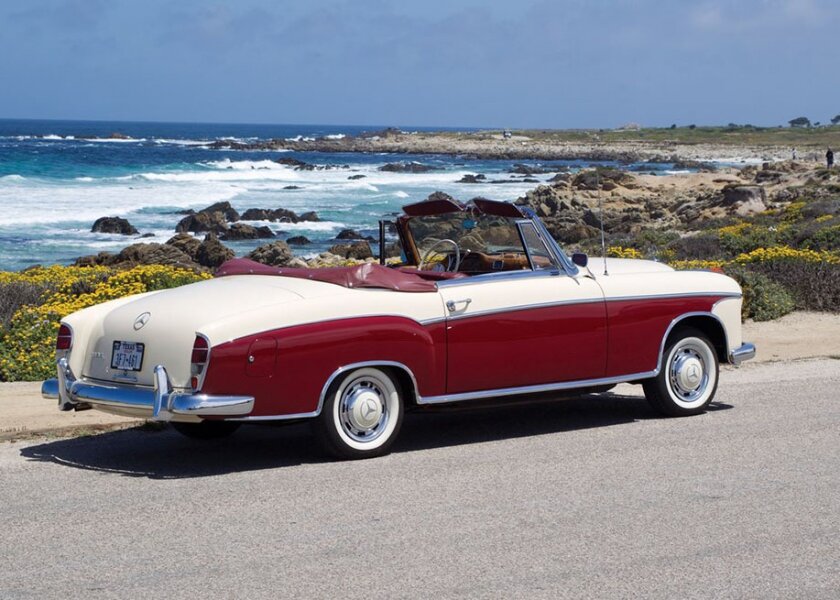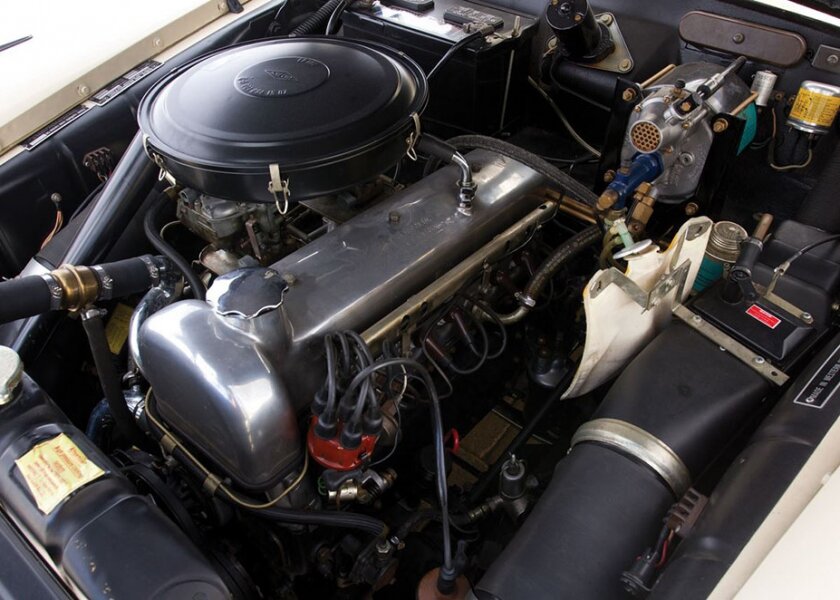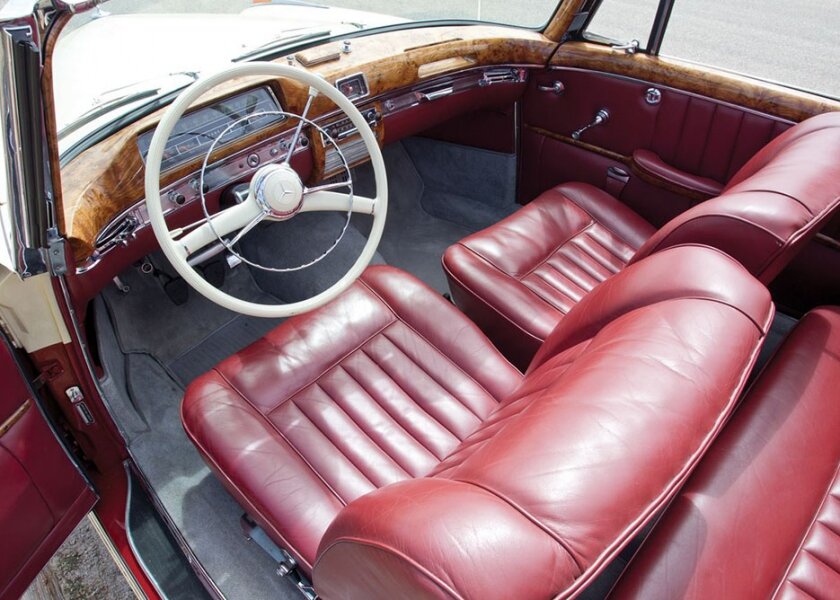1957 Mercedes-Benz 220S Cabriolet



Specifications
Configuration: Inline front-mounted
Engine: OHC V6 with twin Solex carburetors
Displacement: 2.2L
Horsepower: 84 bhp at 4,800 RPM, Torque: 119 ft-lbs at 3,500 RPM
A Little History
Mercedes-Benz launched its 220a, the predecessor to this car, in 1954. It represented their new generation of unit-body constructed cars, which was later nicknamed the “Ponton” series, in reference to its pontoon-style front fenders. The 220a, considered by many to be the first modern Mercedes-Benz, was built on a 6.75-inch longer wheelbase than its predecessor, allowing more legroom for the rear-seat passengers and more room under the hood for a 2.2-liter six-cylinder engine. Servo-assisted brakes became standard in September 1955.
When the 220S was introduced in August 1957, the engine had two Solex downdraft carburetors and its horsepower was increased to 106 horsepower. A Hydrak hydraulically operated clutch also became available as an extra-cost option. The 220S was a quick car by the standards of the day, offering genuine 100-mph capability.
These 157 cabriolets were produced in limited numbers (1,066 220S Coupes and Cabriolets) and hand-finished at Sindelfingen to the highest standards of Mercedes-Benz’s prestige models. Bodies were mass-produced yet finished by craftsman skilled in the art of coachbuilding. This in part explained why the cabriolets cost nearly 75 percent more than their saloon equivalents when new. Unlike the larger 300 S models, the 220S Cabriolets featured a fully retractable convertible roof, giving them a much sleeker and more modern appearance. The “Ponton” was Mercedes-Benz’s first totally new series of post-War passenger vehicles produced from 1953 through 1959. The nickname comes from the German word for “pontoon” and refers to a definition of pontoon fenders subsequently called Ponton styling, which became the precursor of modern automotive design.
The trend featured all-enveloping bodywork enclosing the full width and uninterrupted length of a car, incorporating previously distinct running boards and fully articulated fenders.
Ads from the period, such as this one from 1960, emphasized the comfort that the grand touring car’s lengthened wheelbase, produced, as well as the extra room in the rear seat and trunk for luggage.


















